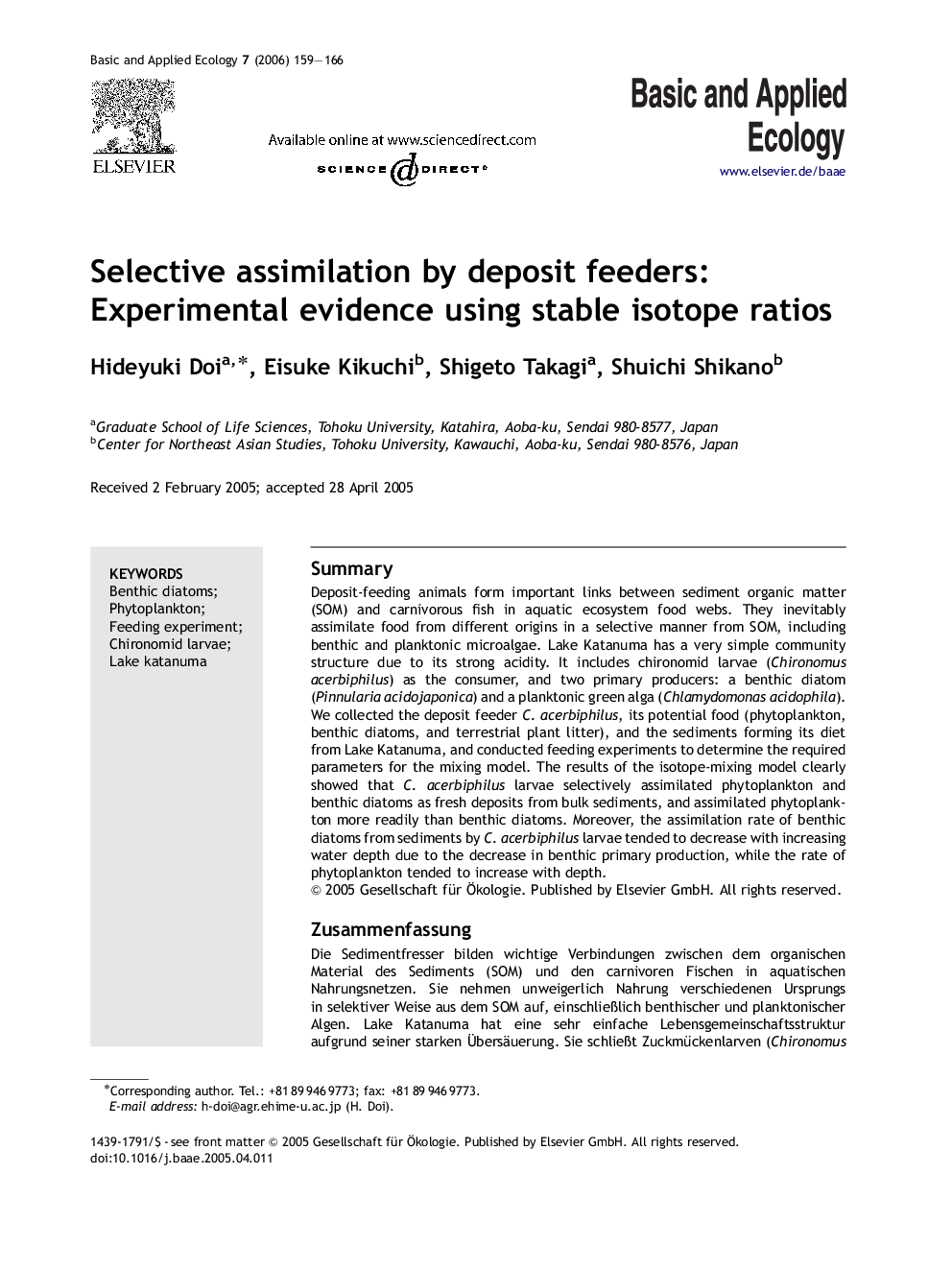| Article ID | Journal | Published Year | Pages | File Type |
|---|---|---|---|---|
| 4384907 | Basic and Applied Ecology | 2006 | 8 Pages |
SummaryDeposit-feeding animals form important links between sediment organic matter (SOM) and carnivorous fish in aquatic ecosystem food webs. They inevitably assimilate food from different origins in a selective manner from SOM, including benthic and planktonic microalgae. Lake Katanuma has a very simple community structure due to its strong acidity. It includes chironomid larvae (Chironomus acerbiphilus) as the consumer, and two primary producers: a benthic diatom (Pinnularia acidojaponica) and a planktonic green alga (Chlamydomonas acidophila). We collected the deposit feeder C. acerbiphilus, its potential food (phytoplankton, benthic diatoms, and terrestrial plant litter), and the sediments forming its diet from Lake Katanuma, and conducted feeding experiments to determine the required parameters for the mixing model. The results of the isotope-mixing model clearly showed that C. acerbiphilus larvae selectively assimilated phytoplankton and benthic diatoms as fresh deposits from bulk sediments, and assimilated phytoplankton more readily than benthic diatoms. Moreover, the assimilation rate of benthic diatoms from sediments by C. acerbiphilus larvae tended to decrease with increasing water depth due to the decrease in benthic primary production, while the rate of phytoplankton tended to increase with depth.
ZusammenfassungDie Sedimentfresser bilden wichtige Verbindungen zwischen dem organischen Material des Sediments (SOM) und den carnivoren Fischen in aquatischen Nahrungsnetzen. Sie nehmen unweigerlich Nahrung verschiedenen Ursprungs in selektiver Weise aus dem SOM auf, einschließlich benthischer und planktonischer Algen. Lake Katanuma hat eine sehr einfache Lebensgemeinschaftsstruktur aufgrund seiner starken Übersäuerung. Sie schließt Zuckmückenlarven (Chironomus acerbiphilus) als Konsumenten und zwei Primärproduzenten ein: eine benthische Kieselalge (Pinnularia acidojaponica) und eine planktonische Grünalge (Chlamydomonas acidophila). Wir sammelten den Sedimentfresser C. acerbiphilus, seine potenzielle Nahrung (Phytoplankton, bentische Kieselalgen und Streu terrestrischer Pflanzen) sowie die Sedimente, die seine Nahrung im Lake Katanuma bilden, und führten Fütterungsexperimente durch, um die notwendigen Parameter für das Mischungsmodell zu bestimmen. Die Ergebnisse des Isotopen-Mischungsmodells zeigten deutlich, dass die C. acerbiphilus-Larven selektiv Phytoplankton und benthische Kieselalgen als frische Sedimente aus der Hauptsedimentmasse aufnahmen, und dass sie Phytoplankton bereitwilliger aufnahmen als benthische Kieselalgen. Darüber hinaus zeigte bei C. acerbiphilus die Aufnahmerate für benthische Kieselalgen aus dem Sediment aufgrund der Abnahme der benthischen Primärproduktion die Tendenz zur Abnahme mit zunehmender Wassertiefe, während die Rate für Phytoplankton die Tendenz zeigte mit zunehmender Tiefe zu steigen.
